Freddy the Pig is the central figure in a series of 26 children's books written between 1927 and 1958 by American author Walter R. Brooks and illustrated by Kurt Wiese, consisting of 25 novels and one poetry collection. The books focus on the adventures of a group of animals living on a farm in rural upstate New York.

Make Way for Ducklings is an American children's picture book written and illustrated by Robert McCloskey. First published in 1941 by the Viking Press, the book centers on a pair of mallards who raise their brood of ducklings on an island in the lagoon in the Boston Public Garden. It won the 1942 Caldecott Medal for McCloskey's illustrations, executed in charcoal then lithographed on zinc plates. As of 2003, the book had sold over two million copies. The book's popularity led to the construction of a statue by Nancy Schön in the Public Garden of the mother duck and her eight ducklings, which is a popular destination for children and adults alike. In 1991, Barbara Bush gave a duplicate of this sculpture to Raisa Gorbacheva as part of the START Treaty, and the work is displayed in Moscow's Novodevichy Park.

JoJo's Circus is an American-Canadian stop-motion animated television series created by Jim Jinkins, David Campbell, Lisa Jinkins, and Eric Weiner and produced by the Canada-based Cuppa Coffee Studios and Cartoon Pizza. The series was written by Douglas Wood, who previously worked for Tiny Toon Adventures and Animaniacs as a creative executive. The series' songs were composed by Jeffrey Zahn and Jim Latham, with lyrics done by Judy Rothman. The theme song was performed by BECKY.
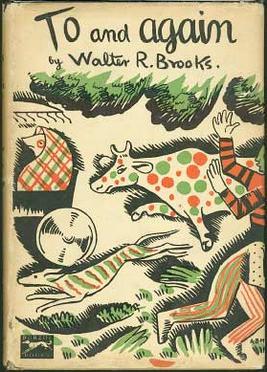
Freddy Goes to Florida (1927), is the first of the Freddy the Pig books written by Walter R. Brooks. It tells how the animals of the Bean Farm traveled to Florida and back again, and their adventures on the way.
Kurt Wiese was a German-born book illustrator, who wrote and illustrated 20 children's books and illustrated another 300 for other authors.

Freddy Rides Again (1951) is the 18th book in the children’s series Freddy the Pig, written by American author Walter R. Brooks and illustrated by Kurt Wiese. In it, the talking Bean farm animals confront rich new neighbors who demand changes in the farm community.
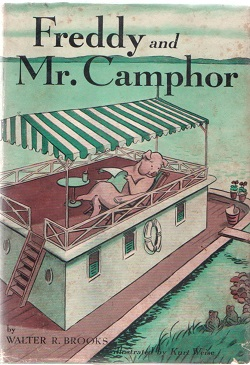
Freddy and Mr. Camphor (1944) is the 11th book in the humorous children's series Freddy the Pig, written by American author Walter R. Brooks and illustrated by Kurt Wiese. It tells of Freddy's adventures confronting trespassers when he takes a job as an estate caretaker.

Freddy and the Men from Mars (1954) is the 22nd book in the humorous children's series Freddy the Pig, written by American author Walter R. Brooks and illustrated by Kurt Wiese. It tells the story of the confrontation between Freddy and his friends, phony Martians, real Martians, and a circus con artist.
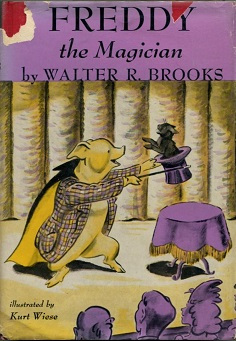
Freddy the Magician (1947) is the 14th book in the humorous children's series Freddy the Pig written by American author Walter R. Brooks and illustrated by Kurt Wiese. Freddy is ecstatic over the opportunity to learn magic tricks from a professional. However, it becomes apparent that this is part of a criminal plot to recover stolen money. Freddy and the Bean animals match their magic and wits onstage and offstage against the crooked magician.

Freddy and the Baseball Team from Mars (1955) is the 23rd book in the humorous children's series Freddy the Pig by American author Walter R. Brooks, illustrated by Kurt Wiese. Capitalizing on Martians' ability to pitch with any of four arms, Freddy creates a baseball team of Martians and circus animals to compete against neighboring towns. An old foe of Freddy's tries to rig the games.

Freddy Goes Camping (1948) is the 15th book in the humorous children's series Freddy the Pig written by American author Walter R. Brooks, and illustrated by Kurt Wiese. When a hotel owner is forced to sell under mysterious circumstances, Freddy and his friend Mr. Camphor pose as campers to investigate.

Freddy the Pilot (1952) is the 19th book in the humorous children's Freddy the Pig series written by Walter R. Brooks and illustrated by Kurt Wiese. When an airplane from a secret airstrip terrorizes the performances of his friend Mr. Boomschmidt's circus, Freddy learns to fly, then gets a plane to track the criminals and stop their activities.

Freddy the Pied Piper (1946) is the 14th book in the humorous children's series Freddy the Pig written by American author Walter R. Brooks, and illustrated by Kurt Wiese. It tells the tale of regathering circus animals following World War II, and of earning money to repair the disused circus equipment.
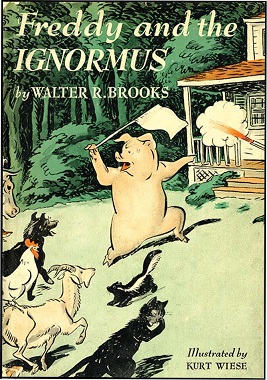
Freddy and the Ignormus (1941) is the 8th book in the humorous children's series Freddy the Pig by author Walter R. Brooks and illustrator Kurt Wiese. There are dramatic reports of a monster in the dark woods near the Bean farm. When local animals are subject to extortion, Freddy and his friends test their bravery confronting the unknown.
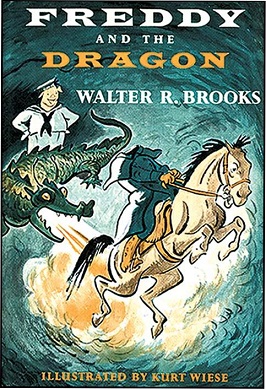
Freddy and the Dragon (1958) is the 26th and last book in the humorous children's series Freddy the Pig written by American author Walter R. Brooks and illustrated by Kurt Wiese. Freddy's attempts to catch the gang extorting money from Centerboro's city folk are hindered by a headless horseman. The dragon created as a circus attraction becomes a tool in fighting crime. The Bean animals settle accounts with the gang and with a long-standing foe.

Freddy and the Bean Home News (1943) is the tenth book in the humorous children's series Freddy the Pig written by American author Walter R. Brooks and illustrated by Kurt Wiese. The story takes place when the United States was in the middle of World War II.
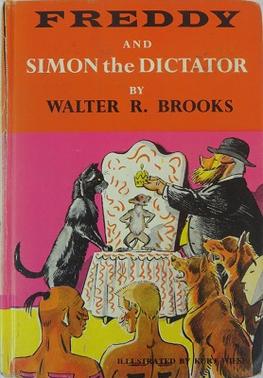
Freddy and Simon the Dictator (1956) is the 24th book in the generally humorous children's series Freddy the Pig written by American author Walter R. Brooks and illustrated by Kurt Wiese. It tells how animals in New York State rebel against humans, destroying property and taking control of farms. At the same time, Freddy’s friend Mr. Camphor is pressured into running for governor. The situations collide when animals take over Camphor’s estate, imprisoning the political figures there.
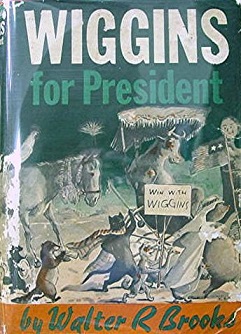
Freddy the Politician (1939) is the 6th book in the humorous children's series Freddy the Pig written by American author Walter R. Brooks and illustrated by Kurt Wiese. In this story, the Bean farm animals start a bank, and elect their first president, two institutions appearing through the rest of the series. Their honest and innocent approach is soon challenged by strangers from Washington.
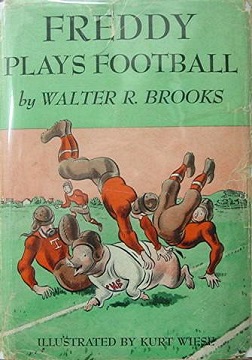
Freddy Plays Football (1949) is the 16th book in the humorous children's series Freddy the Pig written by American author Walter R. Brooks, and illustrated by Kurt Wiese. In it, Freddy and the Bean animals try to convince the Beans that Mrs. Bean’s long lost brother is a fake. Freddy lands in jail for stealing the money the fake is attempting to take. In the meanwhile Centerboro is taken with football fever on account of Freddy's playing.
"Siege Perilous" is the third episode of the fifth season of the American fantasy drama series Once Upon a Time, which aired on October 11, 2015.

















